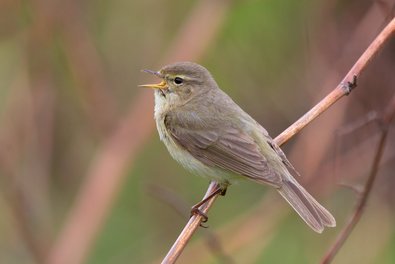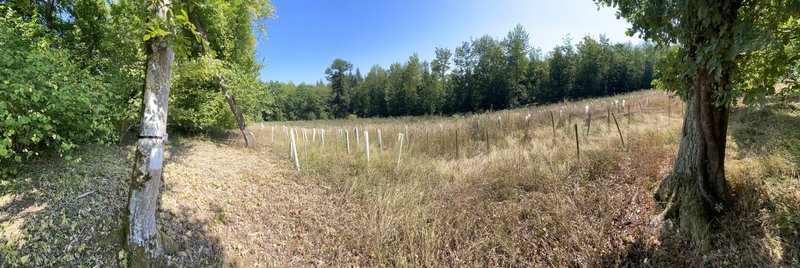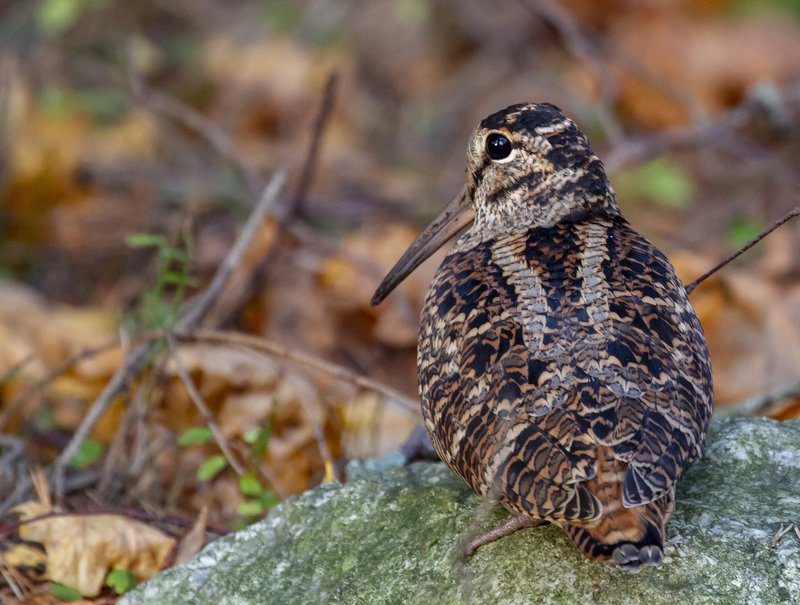In nature, we are constantly surrounded by the songs and sounds of various creatures. We often perceive them only subconsciously, without being able to see their source. For example, the buzzing and chirping in a meadow tells us about the presence of numerous insects. Thus the acoustic signals many species use to communicate can help us. The messages they convey can be very different. Some are designed to attract fellow members of the species, while others keep out rivals or warn of dangers. Regardless of their message, these sounds allow us to detect and study the species producing them.
The still young scientific discipline of bioacoustics is making use of this. It deals with the sound production of animals, the information content of the sounds produced, and their significance in an ecological context. Research fields such as ecology as well as evolutionary and behavioural biology are combined with technology for recording and analysing sound waves. In addition to answering scientific questions, bioacoustics is also used to monitor our environment.
Bioacoustic monitoring
The aim of monitoring is to observe habitats as well as animal and plant populations. Continuous monitoring enables changes in an ecosystem to be recognised and causes to be identified. Thus we can assess the consequences of our actions and decide whether steps need to be taken for the conservation of certain species or habitats. For this purpose, bioacoustic monitoring uses microphones to record sounds in nature.
A lot has happened in bioacoustics since its beginnings thanks to technical progress. Instead of bulky tape recorders, pocket size digital recorders are being used today. Autonomous audio recorders can even produce audio recordings independently for weeks and months without the need for a person to be on site for operation. It is therefore sufficient to attach them to a tree and collect them again after some time. These recorders regularly record sounds from their surroundings according to a preset schedule.
When the recordings are read out after a few weeks, they can be examined on the computer for species-specific sounds. This permits the identification of animal species associated with the location of a recording device. Technical progress has also given a boost to acoustic monitoring in terms of analysis. Previously a person had to laboriously listen to the recordings, minute by minute. Now computer models are used that automatically recognise the desired animal species.
These technical innovations make it possible to determine the occurrence, distribution and abundance of an animal species by means of audio recordings. The use of habitats in terms of time and space can also be investigated using the acoustic signals. For example, the time when songbirds return from their wintering grounds and occupy their breeding grounds here can be reconstructed. Ultrasound microphones are used on busy roads to verify that fauna passages/wildlife crossings aids satisfy their purpose and are being used by bats.
Although acoustic monitoring can only be used for animal species that produce sounds, it is applied with many different taxa. Whale songs were recorded early on, and analysis of ultrasound calls produced by bats has been established for many years. Birds are also particularly well suited for acoustic monitoring thanks to their diverse songs.
One advantage of bioacoustics: Species that are difficult to distinguish visually can often be easily identified by their songs. The closely-related songbirds Common Chiffchaff and Willow Warbler offer a concrete example. The two species are very similar in appearance, but their song differs considerably.
Figure 2: The Common Chiffchaff (Phylloscopus collybita) is a leaf warbler and closely related to the Willow Warbler (Phylloscopus trochilus). These species are very similar in appearance and can only be distinguished by details that are difficult to discern. On the other hand, they are easy to identify by their song. Photos: Common Chiffchaff: Andreas Trepte, Chiffchaff - Phylloscopus collybita, CC BY-SA 2.5, Willow Warbler: Martin Mecnarowski (http://www.photomecan.eu/), Phylloscopus trochilus (Martin Mecnarowski), CC BY-SA 3.0
Common Chiffchaff and Willow Warbler song in comparison
Another advantage of bioacoustics is the minor extent of disturbance. Rare and hidden species can be detected with bioacoustics without being influenced or disturbed by the presence of a person. The monitoring of hard-to-reach or remote habitats is also made easier and can be realised over longer periods of time using bioacoustics. Although the amount of data generated was the biggest problem of audio recording in the past, the use of high-performance hardware in recent years has even made it possible to use bioacoustics in comprehensive monitoring programmes where a large number of recording devices are used.
Ecoacoustics and soundscapes
While bioacoustics focuses on individual species, ecoacoustics deals with the ‘big picture’. It uses the same technical foundations as bioacoustics in doing so. However, the focus is not on the acoustic signals of a single target species, but on soundscapes. In addition to the biophone, i.e. animal sounds, this includes sounds such as wind, rain or rippling streams, which are called geophones. Then there all the human-induced sounds, the anthropophone.
Biophone: Animal sounds (source: FVA BW)
Geophone: Sounds such as wind, rain or rippling streams (source: FVA BW)
Anthropophone: Sounds of human origin (source: FVA BW)
The characteristic soundscapes created by the interaction of these sound sources resemble an acoustic fingerprint. The sound of a Central European mixed mountain forest has little in common with the soundscape of a tropical rainforest. An extensive unimproved grassland can be clearly distinguished from intensively managed grassland by its soundscape.
Here are two soundscapes, both recorded on 21 June 2022 at 21:50. The first recording is from the Rheinaue riparian forest near Karlsruhe. The second recording was made in the north-east of Baden-Württemberg in a forest in the Taubergrund. Despite the identical time of recording, the soundscapes of the two habitats differ considerably.
These soundscapes can also be used for more than characterising and distinguishing ecosystems from each other. The soundscape of a habitat can provide additional information about its state. In an intact ecosystem, the biophone occupies acoustic niches. Animals produce their sounds in different pitches, with individual rhythms and at different times of the day. Thus, each species ensures that its message is heard by the desired recipient and is not overlaid by other sounds.
When an ecosystem is out of balance, individual species can disappear. Gaps appear in the soundscape as acoustic niches are orphaned. The anthropophone can also overlay parts of the biophone, which can cause shifts in the soundscape.
Technical expertise required
Ecoacoustics and bioacoustics promise interesting insights into habitats and animal populations. These disciplines are still in their infancy and tend to be applied in case studies or research projects. However, the use of technology and software is becoming easier and more affordable, making their use increasingly attractive. In the research project Method development for woodcock monitoring in Baden-Württemberg (in German), the FVA BW is investigating whether bioacoustics are suitable for the detection of woodcock.
A sharp decline of this shy forest bird has been observed in parts of Switzerland. Due to poor data availability, it is not yet possible to assess whether the population trend in Baden-Württemberg adjacent to the north is similar. The life of the perfectly camouflaged forest dweller is too secretive and hidden.
The use of bioacoustics in woodcock monitoring therefore not only promises to considerably reduce the required time and effort, but to also answer questions about where the woodcock occurs, how its population is developing and whether there are regional differences. However, extensive preparatory work is necessary before we can search for woodcock in the forest with the help of audio recorders. In what radius the song of the woodcock is captured by the recorders is being tested. Reliable automated analysis of the audio files also has to be ensured.
In other words, do the devices ‘hear’ the woodcock’s vocalisations as well as we do, and can the computer distinguish it from other species? A large number of audio recorders would have to be used to monitor the population throughout Baden-Württemberg. The amount of data obtained quickly becomes overwhelmingly large and manual processing and evaluation is a mammoth task. Establishing a powerful infrastructure and smooth, automated data processing are therefore essential.
The FVA BW is engaged in this preliminary work in its own project especially for the woodcock. Once completed, bioacoustics can be used in large-scale monitoring and can help improve our understanding of this shy bird species.
Listen, listen! Tracking wild animals using bioacoustics (in German)
Presenter: Philip Holderried
With all the technical progress and the promising possibilities of bioacoustics, however, experiencing nature must not be neglected. After all, it is a unique experience to observe roding woodcock at a forest clearing at dusk.
In addition to bioacoustic recording, the FVA BW is therefore testing the surveying of roding woodcock (in German) with citizen scientists. Complemented by bioacoustics, the dedicated participants were able to help significantly improve our understanding of the woodcock population in Baden-Württemberg even during the testing phase.
So even without an audio recorder, it’s time to ‘Open your ears!’ – because there is a lot to discover. Why not close your eyes for a few minutes during your next forest walk and pay attention to the soundscape surrounding you.






